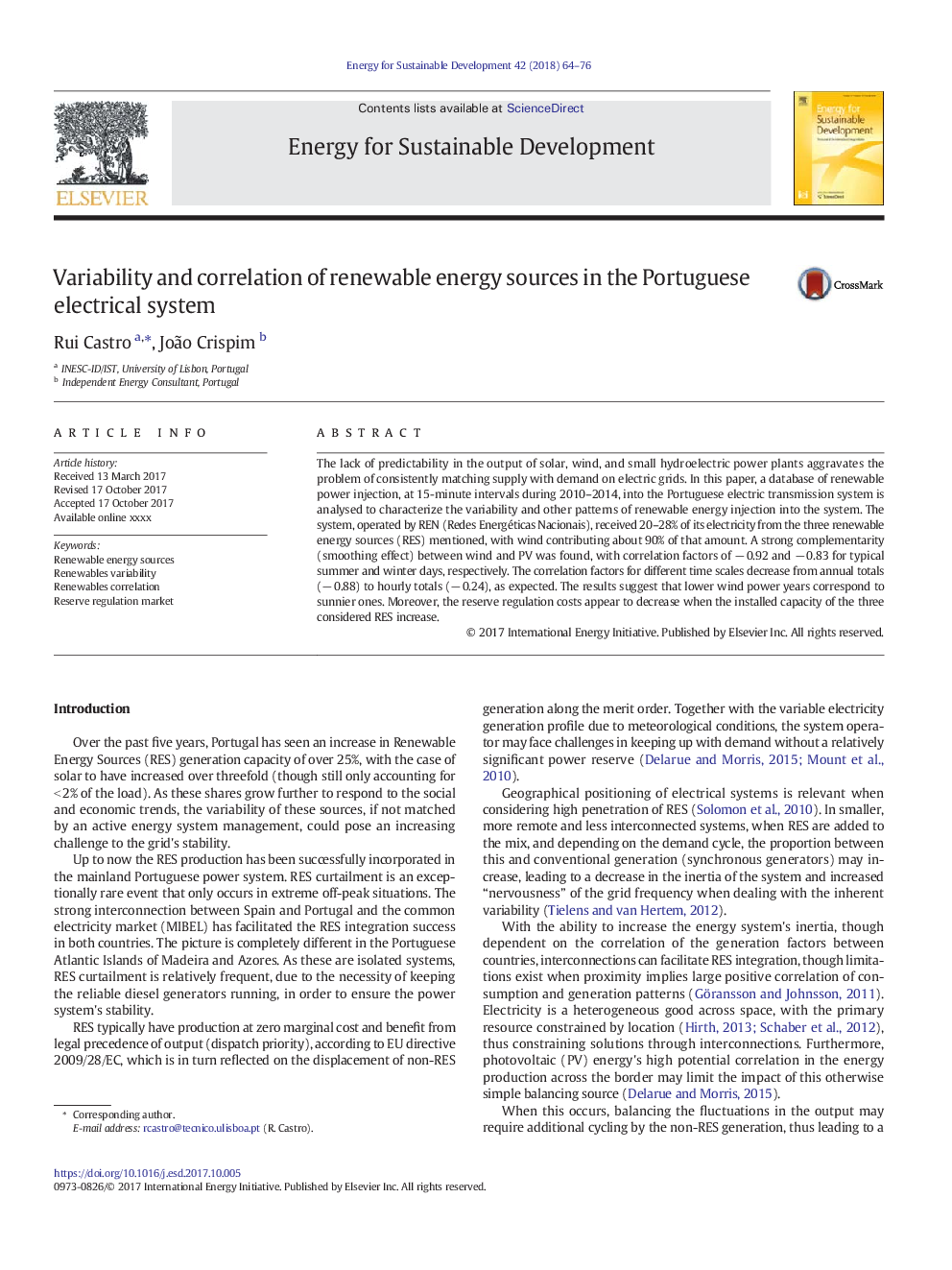| Article ID | Journal | Published Year | Pages | File Type |
|---|---|---|---|---|
| 7453689 | Energy for Sustainable Development | 2018 | 13 Pages |
Abstract
The lack of predictability in the output of solar, wind, and small hydroelectric power plants aggravates the problem of consistently matching supply with demand on electric grids. In this paper, a database of renewable power injection, at 15-minute intervals during 2010-2014, into the Portuguese electric transmission system is analysed to characterize the variability and other patterns of renewable energy injection into the system. The system, operated by REN (Redes Energéticas Nacionais), received 20-28% of its electricity from the three renewable energy sources (RES) mentioned, with wind contributing about 90% of that amount. A strong complementarity (smoothing effect) between wind and PV was found, with correlation factors of â 0.92 and â 0.83 for typical summer and winter days, respectively. The correlation factors for different time scales decrease from annual totals (â 0.88) to hourly totals (â 0.24), as expected. The results suggest that lower wind power years correspond to sunnier ones. Moreover, the reserve regulation costs appear to decrease when the installed capacity of the three considered RES increase.
Keywords
Related Topics
Physical Sciences and Engineering
Energy
Energy (General)
Authors
Rui Castro, João Crispim,
